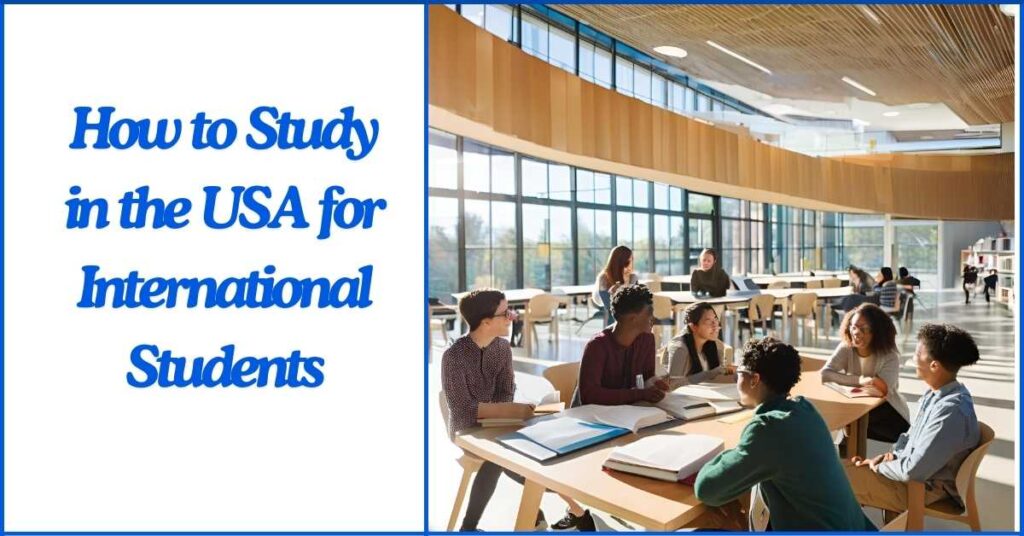Studying in the USA offers international students an opportunity to gain world-class education, access advanced research, and build a global network. However, navigating through applications, visas, and finances may seem overwhelming at first. This guide is here to break down the steps and simplify the process for you.
By following this roadmap, you’ll be ready to embark on your educational journey to the USA with confidence.
1. Researching US Universities and Programs
What Type of University Is Right for You?
The USA offers a variety of educational institutions, each catering to different academic paths. Choosing the right university is essential. Start by considering the difference between public and private universities. Public universities, usually funded by state governments, tend to be more affordable. On the other hand, private universities often have smaller class sizes but may cost more.
Next, consider whether you want to pursue undergraduate or graduate programs. Undergraduate programs typically last four years, while graduate programs vary in length depending on the field of study.
Community colleges also offer an excellent route to start your education at a lower cost, allowing you to transfer to a four-year university later.
Alt Tag:
Infographic comparing public, private, and community colleges in the USA, highlighting tuition costs and locations.
Key Factors to Consider
- University Rankings and Reputation: Check the university’s ranking and reputation, particularly in your field of interest.
- Location: Do you prefer an urban setting with more opportunities or a rural campus with a peaceful environment?
- Academic Programs: Look into the specific programs, majors, and minors offered. Make sure they align with your career goals.
- Extracurricular Activities: A well-rounded experience includes clubs, internships, and social activities.
Example Table Comparing Universities:
| University | Tuition (Annual) | Ranking | Location |
| University A | $30,000 | 20 | Urban, California |
| University B | $40,000 | 35 | Rural, Texas |
| Community College C | $10,000 | N/A | Urban, Florida |
2. Understanding the US Student Visa Process
Types of US Student Visas
The USA offers several types of student visas. Selecting the correct one is crucial to your stay.
- F-1 Visa: This is the most common visa for full-time students enrolled in an academic or language program.
- J-1 Visa: Typically for exchange students participating in an approved cultural exchange program.
- M-1 Visa: Issued for students enrolled in vocational or technical schools.
How to Apply for a Student Visa
Applying for a student visa starts with filling out the DS-160 form online. Follow the step-by-step guide below to ensure a smooth process:
- Complete the DS-160 form online and upload your photo.
- Pay the SEVIS fee (Student and Exchange Visitor Information System) before scheduling your visa interview.
- Schedule and attend your visa interview at the nearest US embassy or consulate.
- Be prepared to provide financial proof and supporting documents during the interview.
Example Flowchart of the Visa Application Process:
Alt Tag:
Flowchart illustrating the steps for applying for a US student visa, from DS-160 form completion to visa interview.
3. Financial Planning and Scholarships
Tuition Costs and Living Expenses
Understanding the cost of studying in the USA is essential for planning. Tuition fees vary by institution and location. Living expenses also fluctuate based on the city, with major cities like New York and San Francisco costing more compared to smaller towns.
- Tuition Fees: On average, tuition ranges between $20,000 to $40,000 per year.
- Living Expenses: Depending on the city, expect to spend around $10,000 to $18,000 annually.
Example Cost Comparison Table:
| City | Tuition (Average) | Living Expenses (Annual) |
| New York | $35,000 | $18,000 |
| Chicago | $30,000 | $15,000 |
| Austin | $25,000 | $12,000 |
Scholarships and Financial Aid for International Students
There are several scholarships available to ease the financial burden for international students. Scholarships can be merit-based or need-based. Research programs like the Fulbright Scholarship, which is government-funded and available to students worldwide.
- Merit-Based Scholarships: Awarded based on academic performance.
- Need-Based Scholarships: Offered to students with demonstrated financial need.
For more details, visit Scholarship Resources.
4. Application Process for US Universities
Standardized Tests (SAT, ACT, GRE, TOEFL, IELTS)
Many US universities require standardized test scores as part of the application. Research which tests are needed for your program. For undergraduate programs, the SAT or ACT is common. Graduate programs may ask for the GRE or GMAT. International students will often need to take the TOEFL or IELTS to prove English proficiency.
Example Timeline for Test Preparation:
[Insert Image Here]
Writing a Strong Application
Crafting a compelling personal statement and obtaining strong recommendation letters can make your application stand out.
- Personal Statement: Share your story and highlight why you’re a good fit for the program.
- Recommendation Letters: Request letters from professors or mentors who know you well.
5. Preparing for Life in the USA
Cultural Differences and Academic Expectations
Adjusting to life in the USA can take some time. Understanding the classroom environment and the cultural expectations will help you succeed.
- Classroom Environment: In US universities, participation and critical thinking are highly valued. Be ready to engage in discussions and ask questions.
- Cultural Differences: Embrace the diverse cultural environment and be open to new experiences.
Student Housing Options
You’ll need to decide between on-campus dormitories or off-campus housing. On-campus housing offers convenience, while off-campus living provides more independence.
Comparison of Housing Options:
| Housing Type | Cost | Pros | Cons |
| On-Campus Dorms | Higher | Close to classes, social life | Less privacy |
| Off-Campus Housing | Varies | More independence, privacy | Commuting, less social life |
Alt Tag:
Comparison of on-campus dorms and off-campus housing for international students, highlighting cost, privacy, and commuting options.
Frequently Asked Questions
Most universities require a minimum GPA of 3.0 for graduate programs, though this varies by institution.
Visa processing time ranges from 3 to 8 weeks, depending on the embassy and country of origin.
Yes, students on an F-1 visa can work on-campus for up to 20 hours a week during the academic year and full-time during breaks.
Conclusion
Studying in the USA offers incredible opportunities for academic and personal growth. With thorough research, careful financial planning, and proper preparation, you can overcome the complexities of the application and visa process. Start today by researching universities, preparing for standardized tests, and applying for scholarships to make your dream a reality.
Take the first step towards your future by exploring US universities that align with your goals and begin preparing your application today!






